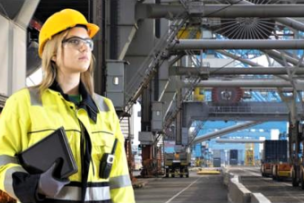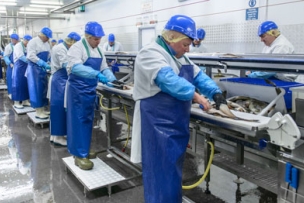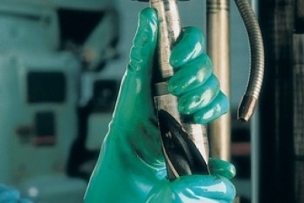Monitoring for toxic and explosive gasses is vital to employee safety—and mistakes can be deadly.
Monitoring for explosive and toxic gases is vital to safety. Yet workers in manufacturing facilities may fail to follow best practices that help ensure safety.
Explosive and toxic gases can collect in confined spaces or leak from gas lines or failed equipment. Undetected, these gases could lead to fires, explosions, exposure to contaminants or asphyxiation.
The Occupational Safety and Health Administration addresses gas monitoring using direct-reading portable gas monitors in several standards, including the standards for permit-required confined spaces (29 CFR 1910.146), hazardous waste operations and emergency response (29 CFR 1910.120) and grain handling facilities (29 CFR 1910.272). But every facility has a duty to keep workers safe from recognized hazards.
Here are some common gas-monitoring mistakes workers in manufacturing facilities make.
Not Knowing the Differences in Gas Types
It’s tough to monitor for gas if you’re not sure which gasses you need to be looking for.
“Before beginning to consider gas detection equipment, a risk assessment needs to be conducted,” says Praveen Sharma, director of product development for Honeywell Industrial Safety, in an Occupational Health & Safety article. “Any company employing staff has the obligation to conduct risk assessments to identify potential hazards, and these can include potential gas, vapor or oxygen deficiency risks.”
Bryan Szczur, an associate gas detection specialist at Industrial Scientific Corp., told OH&S that knowing which gasses they are monitoring for can help workers entering confined spaces understand how their monitors’ sensor configurations work.
“For example, the most common gases could be carbon monoxide, hydrogen sulfide, or a combustible gas such as methane or pentane,” he says. “If any of these is present, it would lead to a displacement of oxygen. For this reason, many companies choose to monitor their spaces with a standard four-gas monitor containing these types of sensors.”
However, says Szczur, if other volatile organic gases, such as acetylene or toluene, are also present, a standard four-gas monitor would not be sufficient.
“If workers are aware of the potential for gases to exist in a confined space, they should understand how to use their monitor properly to keep them safe,” he says. “Only then can they trust their gas detector.”
Not Performing Routine Bump Tests and Gas Detector Maintenance
It’s not enough to have gas monitors and to use them regularly. Facilities also need to be sure that they’re regularly-performing gas detector maintenance. This is done with regular bump testing and calibration.
“A bump test subjects the monitor to a measured quantity of gas and verifies that the monitor’s alarm sounds in a timely fashion,” says Raghu Arunachalam, of Industrial Scientific Corp. “Calibration ensures the continuing accuracy of the gas monitor.”
Arunachalam wrote in EHS Today that bump tests help make sure that the monitor hasn’t unexpectedly failed. Failure is not common, he said, but sensors do sometimes stop working. If a bump test is only performed monthly, the monitor could malfunction for weeks before anyone notices it.
In 2013, OSHA released a safety and health information bulletin on calibrating and testing direct-reading portable gas meters. The agency recommends that bump tests and calibration checks be performed each day before the monitor is used; if the monitor fails the calibration check, a full calibration test should be conducted. Monitors that fail the tests should be immediately removed from use.
![]() How are companies leveraging today's safety trends? Read "Using Technology to Improve Workplace Safety."
How are companies leveraging today's safety trends? Read "Using Technology to Improve Workplace Safety."
“Far too often, gas alarms are viewed as a nuisance or an error and are ignored by workers. It is critical workers comprehend the fact that the detector is utilized for their safety.”
Not Following Safety Plans After a Gas Alarm
In addition to maintenance tasks like bump testing, Trish Luedtke and John Raimondi of MSA Safety, writing for Industrial Safety and Hygiene News, say it’s important for safety practices to be reinforced regularly.
“Far too often, gas alarms are viewed as a nuisance or an error and are ignored by workers,” say Luedtke and Raimondi. “It is critical workers comprehend the fact that the detector is utilized for their safety. Following safety protocol when alarms are triggered is a critical safety practice and could prove to be lifesaving.”
“There are countless … reasons, behavioral and cultural, that stand in the way of a manual reporting program being effective,” says Josh Futrell, writing for Industrial Scientific. He says workers may not notice alarms on their gas detectors, may worry about getting in trouble if they report an incident, or may just be focused on getting their jobs done.
Crowcon Detection Instruments says alarms may be ignored if they go off frequently and are seen as a nuisance. “If alarms are going off so frequently that they are being ignored, then the situation needs to be addressed,” the company says. A review of the equipment and the environment will determine if the alarms are false alarms and whether the monitor needs to be adjusted or replaced. But ignoring alarms should not be an option. “Alarms being ignored has led to fatalities in the past.”
Not Offering Gas Detection Training for Employees
Gas monitors only work if employees are trained to use them. This includes knowing how to conduct regular testing, understanding the meaning of different readings, and knowing when there’s a problem.
“Everyone on your job site should be trained on operations, procedures and ways to minimize risk, given the dangers,” says PK Safety Supply. “An accident can happen to anyone, no matter how experienced the person is.”
“The four common steps to operating a gas detector are to turn it on and check the battery status, zero the sensors, bump test, and clear the peaks,” says Szczur. “It is one thing to tell workers to follow these steps, but it is even more important to ensure that they know how. The resources are there to help workers learn their instruments, whether it be a classroom session, a product manual, an online video, or even a phone call to a company representative.”
Do your workers test their gas monitors before each use?





Talk to Us!
Commiting a small mistake in gas monitoring can result in hazards or uncertain situation. The post helped me a lot.
gas detector
28We agree, and thanks for visiting Better MRO.
24Carrying effective <a href="https://www.martek-marine.com/blog/personal-portable-gas-detectors/">gas detection equipment</a> and making sure that equipment is performing accurately is an essential and potentially life-saving element of shipping.
20Thanks for weighing in, Cyrus.
28I'm glad you talked about gas detectors and how they should be maintained regularly. Recently, one of my cousins said he's interested in investing in an industrial plant. I believe my cousin could benefit from reading about hazardous gas and how to prevent a major accident, so I'll be sure to share your tips with him! Thanks for the information on gas detection and its importance for manufacturing companies. https://coolairinc.com/products/
20Leave a reply
Your email address will not be published. Required fields are marked *